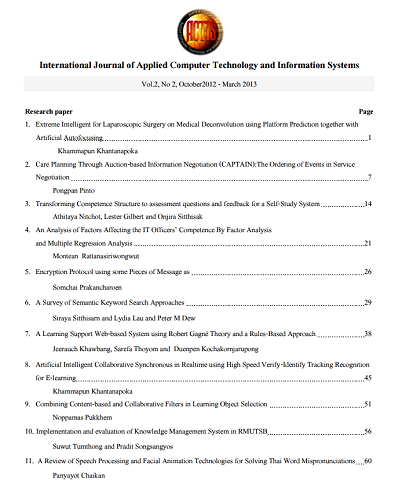A Survey of Semantic Keyword Search Approaches
Main Article Content
Abstract
A broad range of approaches to semantic information retrieval has been developed in the context of semantic web concept. Ontologies take the significant role for improving the precision of search. In the last few years, there has been an increase in the amount of information stored in semantically enriched knowledge bases, represented in RDF format. To access RDF information, the semantically formal queries are required. However framing such queries is inappropriate for inexperience users because they need specialist knowledge of the underlying ontology and syntax. Therefore an easy-to-use interface is required. Many semantic searches provide solutions to solve this limitation. This survey introduces interfaces of semantic search systems built on the top of semantically enriched knowledge bases. Semantic keyword search systems are particularly focused. The common idea of semantic keyword search architecture is presented and six semantic keyword search systems implemented by different approaches were investigated. We briefly discuss comparison of them by our criteria. The criteria were derived from the common ideas and technical implementations used in these approaches. The evaluation methods in three features: effectiveness, efficiency and usability are also explored to guide researchers on how to conduct experiment evaluations. Finally, the open issues on semantic keyword searches are raised. These give directions for future application development and the research.
Article Details
Section
ACTIS Article
It is the policy of ACTISNU to own the copyright to the published contributions on behalf of the interests of ACTISNU, its authors, and their employers, and to facilitate the appropriate reuse of this material by others. To comply with the Copyright Law, authors are required to sign an ACTISNU copyright transfer form before publication. This form, a copy of which appears in this journal (or website), returns to authors and their employers full rights to reuse their material for their own purposes.

